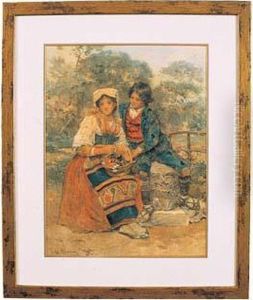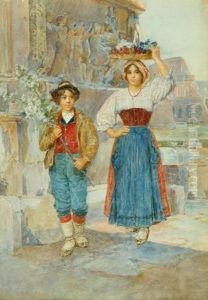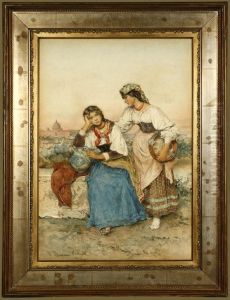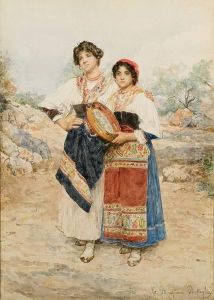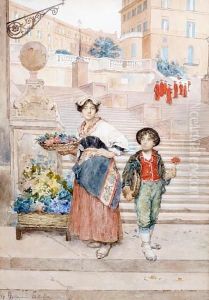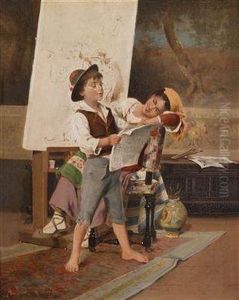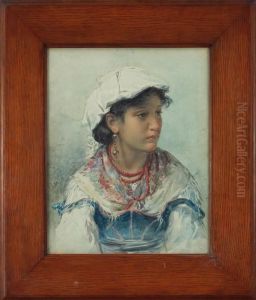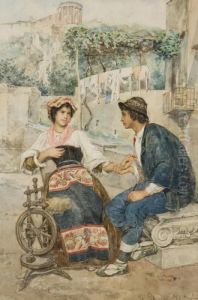Clelia Bompiani Battaglia Paintings
Clelia Bompiani Battaglia, born in Rome in 1848 and passing away in 1927, was an Italian painter and illustrator, remembered for her contributions to the art world during a time when female artists were often overlooked. Her work is characterized by its meticulous attention to detail and its exploration of a variety of subjects, including religious and historical themes, portraits, and genre scenes. Bompiani's artistic journey was deeply influenced by her family's involvement in the arts; she was the daughter of painter Roberto Bompiani, who was also her mentor and first teacher. This familial environment nurtured her talents and instilled in her a profound understanding of artistic expression from a young age.
Bompiani's career spanned several decades of the 19th and early 20th centuries, a period marked by significant social and cultural changes in Italy and across Europe. Despite the prevailing gender norms of her time, which often restricted women's access to formal art education and professional opportunities, Bompiani managed to carve out a space for herself in the art world. She participated in major exhibitions, including the Paris Salon, where her work received critical acclaim. Her paintings were known for their historical accuracy, emotional depth, and technical skill, qualities that made her one of the few women of her era to achieve recognition in the competitive field of historical painting.
In addition to her painting, Clelia Bompiani was also involved in the burgeoning field of illustration, contributing to various publications. Her illustrations often featured themes similar to those in her paintings, reflecting her interest in history and storytelling. Bompiani's legacy is not just in the beauty and precision of her artwork but also in her role as a pioneer for female artists. She demonstrated that women could contribute meaningfully to the arts and achieve professional success in their own right. Today, Bompiani's work is celebrated for its contribution to the Italian art scene of the late 19th and early 20th centuries, and she remains an inspiring figure for artists everywhere.
